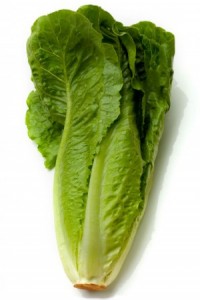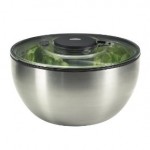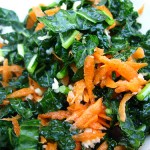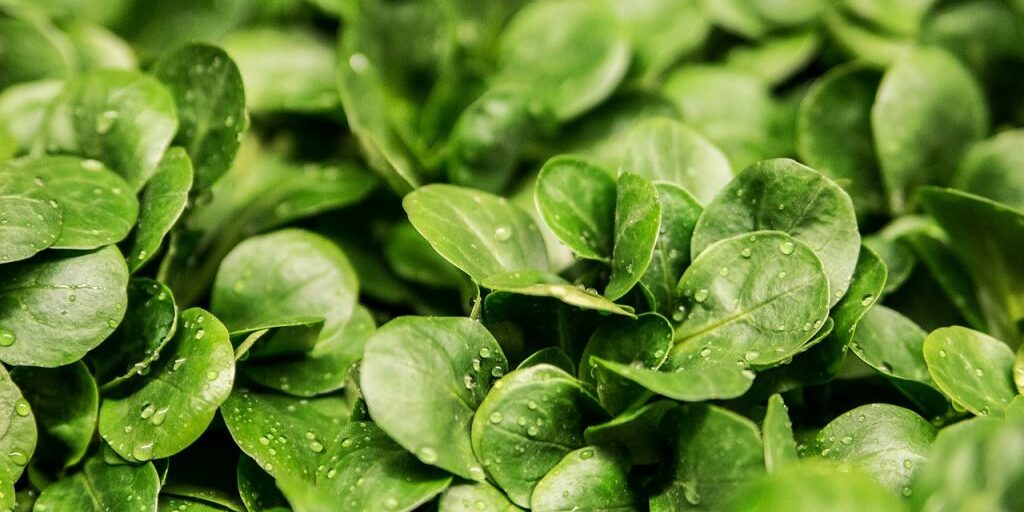I am a big-time salad girl. It’s my default food and I’m forever searching for interesting new combos. I’ve spent many years perfecting a basic salad, from which you can build and I believe there are basic rules that I need to follow if I want a crisp & enticing bowl. My husband is right on board with the daily salad thing, as long as it’s not what he calls “those awful soggy leaves” – I know exactly what he means: those ubiquitous “baby salad greens” that come already triple-washed (in chlorine), so you can throw them straight in the bowl. The problem is, the moment you add dressing, they kind of smoosh down, losing half their volume and their appeal. So let’s talk about how to create the perfect salad:
1. Taste Rule: Combine sweet & tangy with herbs.
You need to get creative with the taste and the easiest way to do this is to use loads of fresh herbs. I highly recommend you start growing the following herbs – planters and containers (on windowsills in winter,) work well: Parsley, Tarragon, Mint, Chives, and Basil (in the Summer). These basic herbs will totally transform the taste of your salad. The other taste tip is to make sure you include both tangy and sweet flavors. I love to throw dried cranberries, cherries or chopped apricots on my salad to add sweetness to the tang of a balsamic dressing. Dressings are obviously integral to the taste, but we’ll come to that in a bit.
– planters and containers (on windowsills in winter,) work well: Parsley, Tarragon, Mint, Chives, and Basil (in the Summer). These basic herbs will totally transform the taste of your salad. The other taste tip is to make sure you include both tangy and sweet flavors. I love to throw dried cranberries, cherries or chopped apricots on my salad to add sweetness to the tang of a balsamic dressing. Dressings are obviously integral to the taste, but we’ll come to that in a bit.
2 Texture Rule: Crunchy not Soggy!
It’s all about the crunch! There are many ways that you can create a really crunchy salad, however the first thing to consider is the base of the salad, which in most cases is lettuce. How you wash and dry your salad leaves is the first thing to consider because if they’re not totally dry, you’ll end up with a wilted/soggy bowl of leaves. My favorite salad spinner is the OXO stainless steel – leaves come out bone-dry and  you can serve straight out of the stainless bowel.
you can serve straight out of the stainless bowel.
Baby salad leaves & mixed leaves have the least crunch, so I would suggest going with a hardy Romaine lettuce. Iceberg has a good crunch, but it’s the least nutritious of the lettuce family, so I tend to avoid it. Think outside the box in terms of texture – a great way to get that crunch is to start with a base of finely chopped kale or Swiss Chard. When building your salad, hard veggies will obviously provide maximum crunch! (carrots, radishes, jicama etc).
3. Bite-Size Rule: Gotta be easy to eat!
The problem with many salads, is that they’re not chopped enough. There’s nothing worse than having to stuff over-sized leaves dripping with dressing into your mouth – especially at a restaurant or fancy dinner. I think that second to the crunch is the chop-size. A well-chopped salad is ideal because it’s simply easier to eat – you can also combine all the different flavors and textures into one forkful. The best implement I own for a perfect chopped salad, it the OXO salad  Chopper and bowl. It does the job in a matter of seconds and most importantly doesn’t over-chop, which could create mush.
Chopper and bowl. It does the job in a matter of seconds and most importantly doesn’t over-chop, which could create mush.
4. Color Rule: The Full-Spectrum
We’ve all heard it before: “eat the colors of the rainbow” and it’s true – getting a huge color spectrum into your salad will ensure you’re getting all the anti-oxidants you need – and much better this way than buying expensive supplements. The color also creates a beautiful visual – grated beets/carrots, yellow bell peppers and creamy white jicama look gorgeous. A really pretty touch is to add pomegranate seeds when in season, as they resemble little scattered jewels. I also love to sometimes go for a plain green salad, but love to use loads of different shades of green to create a depth of color: dark green Kale, bright green romaine with pale green chunks of crispy apple.
plain green salad, but love to use loads of different shades of green to create a depth of color: dark green Kale, bright green romaine with pale green chunks of crispy apple.
The Dressing:
Having created the perfect salad, you want don’t want to ruin it with a bitter or bland dressing.
Here’s my basic go-to vinegarette, which I build on:
- 3 tablespoons balsamic vinegar
- 1 tablespoon Dijon mustard
- 1 garlic clove, minced
- 1tsp raw honey
- 1/2 cup olive oil
- Salt and freshly ground pepper
Tip: Don’t skimp on buying cheap olive oil or balsamic vinegar. I recommend buying the best quality Extra Virgin (cold-pressed) Olive oil that you can find.  The key is never to use it for cooking – it’s a total waste of money and should never be used to fry anything because it has a low smoke point. Hide it away for your precious vinegarette. Also, keep it in a cool, dark cupboard to help it preserve it’s anti-oxidants. The same deal with Balsamic Vinegar – you get what you pay for – small expensive bottles from gourmet stores might seem like an silly indulgence, but you want it to be aged, thick and syrupy if possible.
The key is never to use it for cooking – it’s a total waste of money and should never be used to fry anything because it has a low smoke point. Hide it away for your precious vinegarette. Also, keep it in a cool, dark cupboard to help it preserve it’s anti-oxidants. The same deal with Balsamic Vinegar – you get what you pay for – small expensive bottles from gourmet stores might seem like an silly indulgence, but you want it to be aged, thick and syrupy if possible.
Variation:
I sometimes add a little Tamari to this basic vinegarette, or I’ll shove it in the blender with 1/2 cup of Silken Tofu to create a creamy vegan variation.
Toppings:
Having assembled the whole hog, it’s time to figure out if I want a topping or not. I think of the protein as a topping. This might be grilled salmon, chicken, feta cheese, hard boiled eggs, or cubed Tofu. I like to toss my protein (unless it’s salmon, which falls apart,) into the salad. It’s important, however, to do this after you’ve chopped the main body of the salad.
Finally, you may want to dust some sesame or other kinds of healthy seeds on the very top. Check out these wonderful Seed Blend by eSutra – I love to have these to hand, as they add healthy Omega’s and fiber to every bite.
Finally, make sure all of your salad ingredients are organic if possible. I’m not a zealot when it comes to organic food, and certainly don’t think we need to buy everything organic, however, most of the fruits and veggies in my “Must buy organic” list are the kinds that you’ll use for a salad. If a certain veggie isn’t in season, substitute with another.




Thanks for sharing your salad dressing recipe it sounds delicious. I love a good salad. I also was interested in the Seed Blend. Are the flax seeds whole? I like to grind mine fresh over the top of a salad.
Hello!MY e mail ID: murthytsv@gmail.com
Very Nicely presented. I liked the presentation . The Salad preparation is of American back ground. for other regions the variations do exist. Are you trying to do some preparations basing on regional tastes, requirements, availability of ingredients etc.Thanking you. Yours, MURTHY